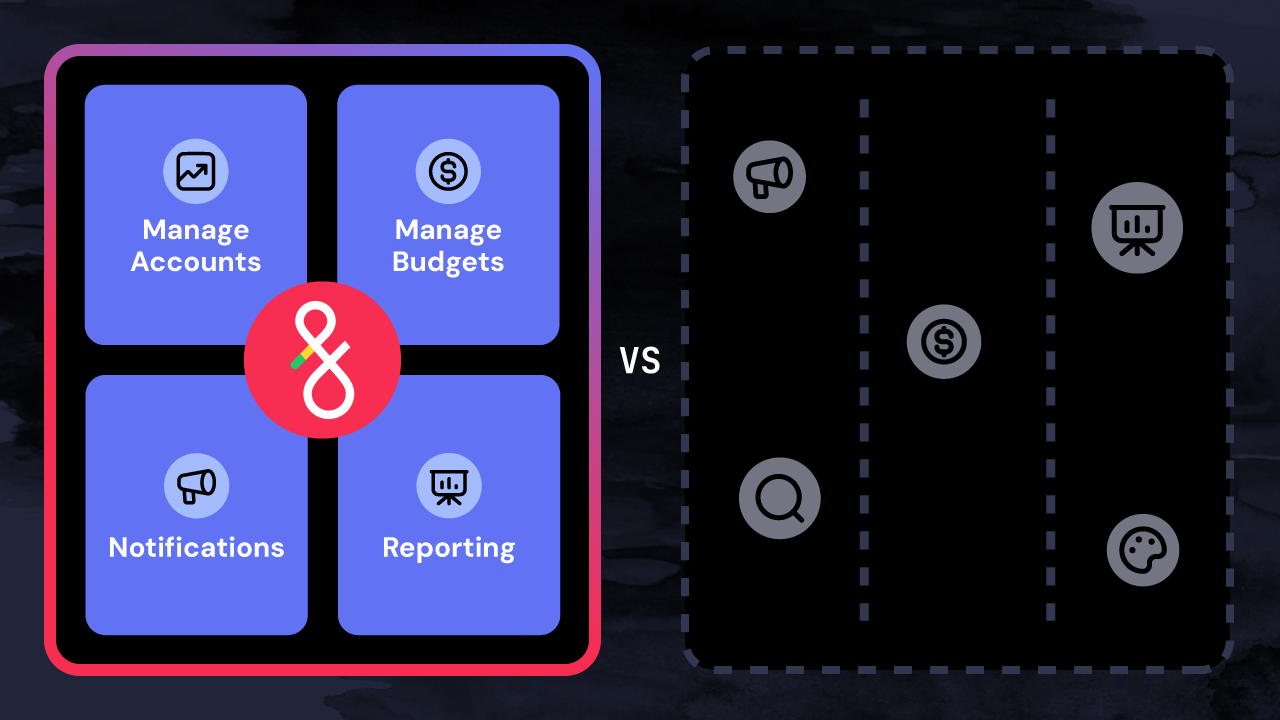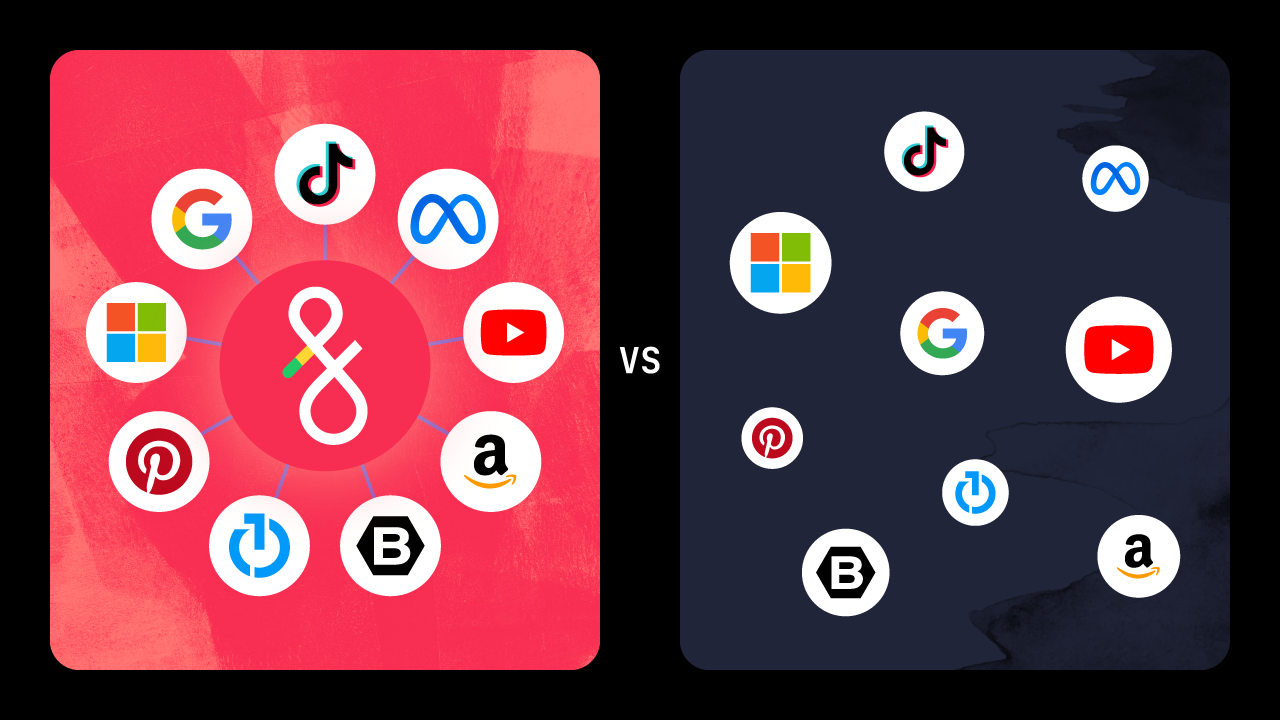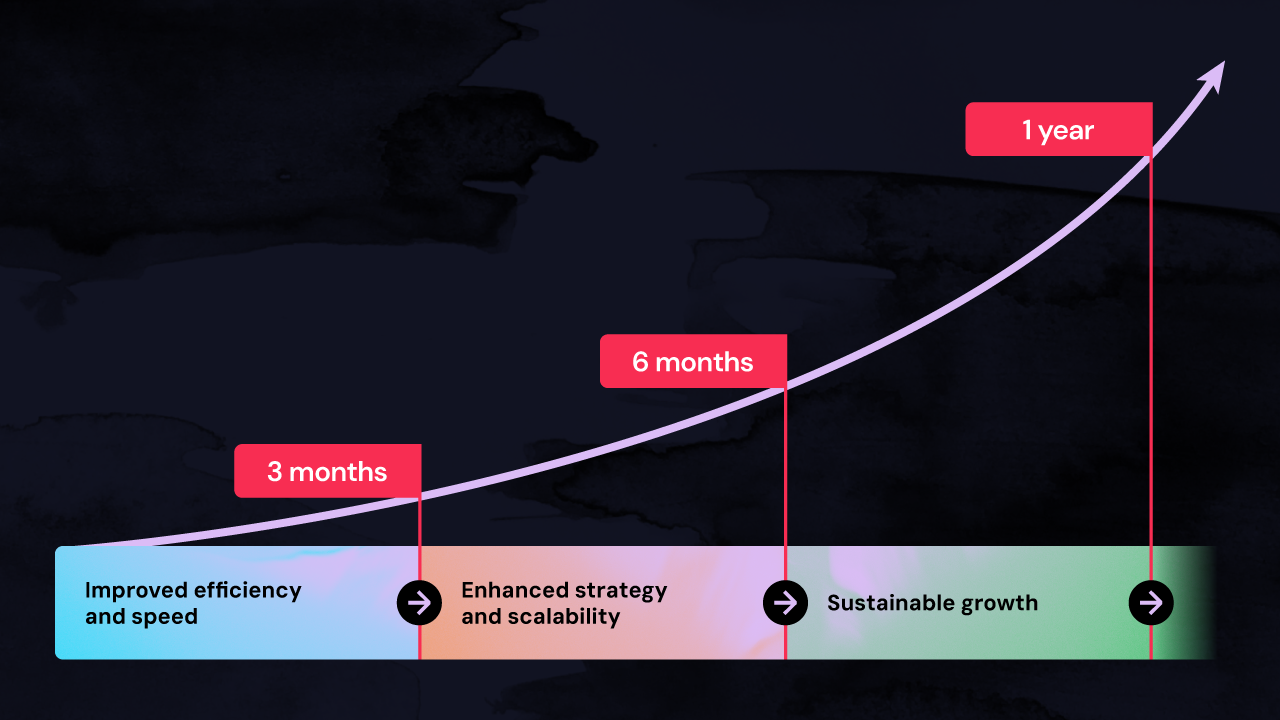Since we started Fluency a little over 5 years ago, we’ve been talking about the importance of time savings, how it allows you to shift the focus of your teams from taskwork to more engaging and meaningful high-cognition activities, and how it can ultimately create business value (for enterprises and especially for agencies.) And while our platform is now utilized by everyone from the ad industry’s most agile agencies to the largest players in verticals like auto retail and multi-family housing, not a week goes by where someone doesn’t bring up challenges around time savings (from the concept itself, to what should happen with your resources AFTER you and your team start seeing its benefits.).
We’ll break this big subject down into three recurring themes: the inevitability of automation; the “business and billing model” issue; and what to do with resources after you’ve adopted automation.
The Inevitability of Automation
If there’s one challenge that makes sense to talk about up front, it’s this: you need to accept that automation is here. After years of “AI this,” “machine-learning that,” and a lot of jokes and theories about the rise of the machines, Robotic Process Automation (RPA,) and a host of related technologies are broadly available, and are underpinning major functions across industries from HR to personal finance. If you’re an agency or marketing team that’s been pushing off investigating (and adopting,) automation in your digital advertising operations, assume this: Your clients and stakeholders (both current and future) already have expectations and perceptions of automation that you probably haven’t had a hand in setting…to say nothing of your competitors possibly jumping in ahead of you—with both feet.
Why have orgs formed solid opinions about automation? Company X might have a CFO who successfully integrated automation into any number of their processes, and then suggested to the CMO that they should do the same. Company Y? After reading article after article about ChatGPT and AI, the person who wrote the initial RFP your agency won now wants to know "what you're doing with MY hours? Are you using technologies that save time? Or are you still burning hours by doing things the OLD way?" And Company Z? They are publicly held, and have no interest in continuing to expose themselves to the liabilities that come with error-prone processes; they’re mandating that their vendors have plans in place to reduce and eliminate certain kinds of risks, and they know automation has a big hand in doing that.
So whether your agency or marketing department is ready for automation or not, your clients are. And if you don’t build out your own philosophy on it—as well as prepare your people, your processes, and your systems for automation—someone else might do it for you.
Business Cases and Billing Models
There’s a belief among agencies (and the larger the agency, the more common this belief is) that automation-enabled time savings—almost any time savings, really—is at odds with their business models. “We make money based on billable hours…less is definitely not more…” This attitude is as understandable as it is pragmatic; you’ve spent years gaining experience, building a business, and refining your models to produce healthy margins, and your current and future success feels like it’s dependent on maintaining a status quo based on billable hours. While it’s true that your team is going to see massive time savings when you implement automation into your campaign workflows, the answer to this challenge is actually pretty simple. We’re not telling you to reduce your team’s hours, increase what you charge per hour, or otherwise alter the core calculations your budgets are built around. Instead, you need to change what your team is spending their time on. If a campaign manager is budgeted to spend 20 hours a week on campaigns for a specific brand, they can still do that—they’ll just be spending a fraction of that time on tasks that—no matter how necessary—have an unsustainable combination of high risk and low value. Instead, they’ll spend more time on the things that move the needle for your clients and your own business. That leads us to the third consideration…
Resource Redeployment: Campaign and Client Strategy ≠ Ad Execution
Okay, so you’ve accepted automation’s role in digital advertising. You’ve also realized you can adopt automation without completely upending your business model. The third challenge—what to do with a highly-skilled group of people who now have bandwidth—is a topic we’ve talked and written at length about, and we’re always game to expand on it. One idea we always stress (no matter if it’s in a new business pitch, a blog post, or a video,) is about how the shift to strategic/strategy-focused work benefits your business, your team, and your clients equally.
Before we define what strategy is, here’s what it isn’t: it’s not copywriting, A/B testing, geotargeting, cut and pasting, button pushing, or any other part of ad execution. While these tasks are all important to the short-term success of a campaign, at the end of the day, they remain TASKS. Mundane. Repeatable. Tactical. And they’re often at the root of a host of problems for your business, including the fact that there are no economies of scale associated with them, that they are prone to human error, and that they exact a toll on your team. These are exactly the types of tasks that Fluency’s RPA platform was designed to solve for.
Once you’ve adopted automation, a majority of your team will now have time to focus those same hours you were previously billing for tactical, low-value work on strategic endeavors, ones that set the client (and your relationship with them) up for long-term success. Deeper competitive intelligence and category insights? You’ve got time for that now. More time working with stakeholders (especially on an individual level,) for goal setting? You can do this every month instead of every quarter. Regular time and space for ideation and innovation? Put it on the calendar. Professional development? The kind that drives job satisfaction, ownership, and higher performance all at once? Yes, yes, yes.
Enabling and Supporting your Success
Concerns about automation (before, during, and after adoption) aren’t irrational. Again, we’ve heard them often, and understand why there are reservations about automation’s impact on agency business models and its implications on staffing—along with questions about the technology itself. You’ve built a business based on relationships, experience, and talent, and deviating from the formulas you successfully use can seem too risky. But the challenges (and opportunities) that have presented themselves over the past few years should have everyone in this industry reconsidering their playbooks.
While we’d never claim to have had a crystal ball, we know that when we built the Fluency platform, it had to be one that didn’t simply enable our clients to scale, it had to scale itself: it had to grow and adapt to changes in technologies, changes in the channels and ad platforms, and changes in the business itself. This engineered—and intentional—adaptability has happened in parallel to some people taking a “wait and see” approach to automation, while others tried to piecemeal it into legacy tech stacks that were already overburdened with any number of other disparate systems. Our platform is built not just for today but for tomorrow as well, always in service of enabling and supporting success for agencies and marketing teams, making them better by reducing and eliminating taskwork so they can focus more energy on high-value activities. If you’ve still got specific questions, concerns, or comments about automation-enable time savings and how it can positively transform your team—and your business—hit us up and we’ll schedule a call immediately.






